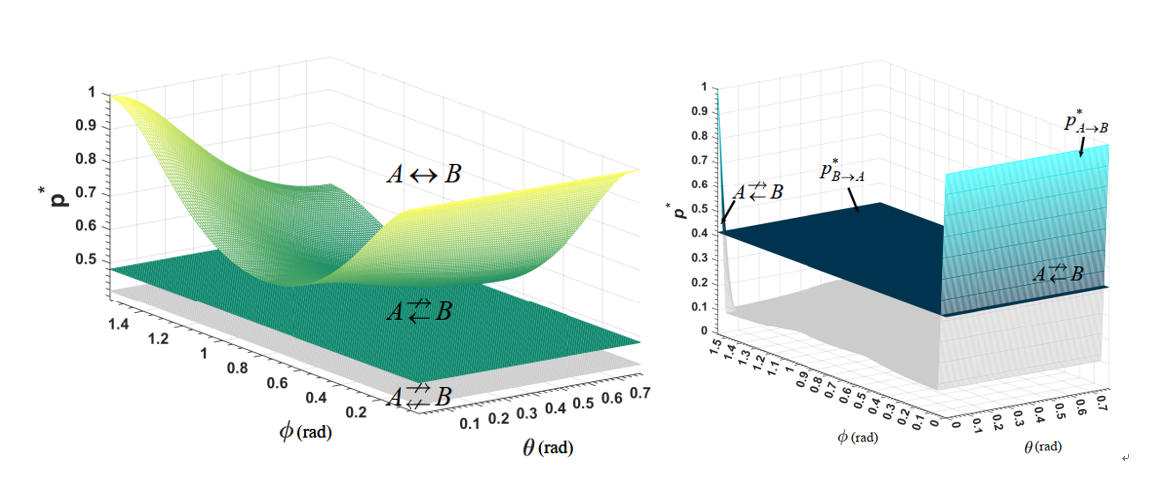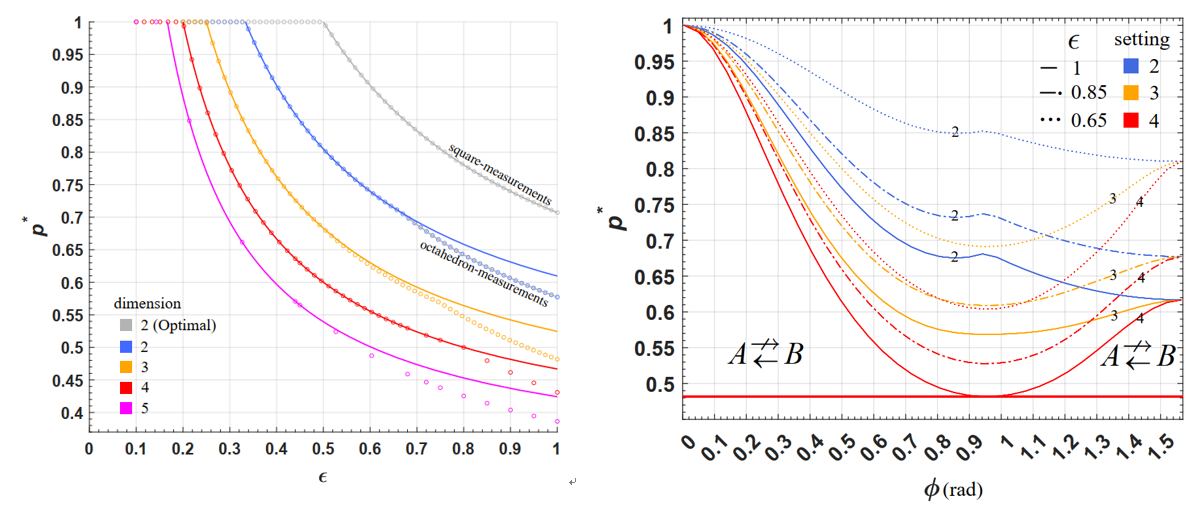Progress on one-way EPR steering in higher-dimensional system
2022/09/14
A recent work on one-way EPR steering in higher-dimensional system has been accomplished by Dr. Qiang Zeng, who works as assistant researcher in Beijing Academy of Quantum Information Sciences. The team of quantum communication and opto-devices led by chief scientist Dr. Zhiliang Yuan have been devoted to research directions such as single-photon detector, quantum dots, quantum repeater, and the related communication protocols.
Quantum entanglement, which has a clear mathematical structure (that is, the state of the system is non-factorizable), is seen as a counterintuitive effect exemplified by real physical systems. This led to the dispute on the completeness of quantum mechanics that was raised from the famous Einstein-Podolsky-Rosen argument, and the dispute was later reformed into the discussion and certification of the violation of Bell inequalities.
Indeed, it was not revealed until recently that quantum entanglement, in the view of correlation, has a far richer structure between non-factorizable and Bell-nonlocal. The intermediate form of entanglement structure is named steering, for the roles of the steering and the steered parties are specified and non-interchangeable.
The hierarchy of the three structures can be stated as: For a given quantum state, at least one party being able to steer to other guarantees the state is entangled. Further, if the shared quantum state violates Bell-type inequalities (i.e. being Bell-nonlocal), the two parties are able to steer each other.

Fig 1. One-way steering versus two-way steering
As steering has direct a correspondence to information tasks, various applications of steering have been found, such as one-sided device-independent quantum key distribution, randomness certification, subchannel discrimination, device-independent quantification of measurement incompatibility, secure quantum teleportation, and secret sharing.
Existing works mainly discussed about the two-way steering states and are limited in two-dimensional cases. In this work, the author extends the exploration of one-way steering to genuine high-dimensional systems. Specifically, he first introduces the d-dimensional partially entangled states, which is a generalization of the two-qubit form. Then, taking three-dimensional partially entangled states for example, he illustrates how one-way steering manifests in high-dimensional systems.

Fig 2. Left panel:Results of Mutually unbiased measurement;right panel:Results of POVM
Next, the author proposes a loss-counted model for characterizing d-dimensional Einstein-Podolsky-Rosen (EPR) steering in a more practical manner, and accordingly develop an operational numerical method. Finally, he applies the method to characterizing quantitatively the relation between the measurement settings and detection efficiencies of two-qutrit one-way steering states.

Fig 3. Left panel:Comparison of loss-counted model and known analytical bounds.;right panel:Trade-off relation between the heralding efficiency and the measurement settings for two-qutrit partially entangled state.
This work has been published in Physical Review A Vol 106, No. 3 on 2 September 2022. This work was supported by the National Natural Science Foundation of China, and the International Postdoctoral Exchange Fellowship Program by the China Postdoctoral Science Foundation.
 中文
中文 Email
Email QCloud
QCloud Log in
Log in
